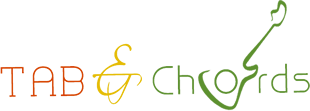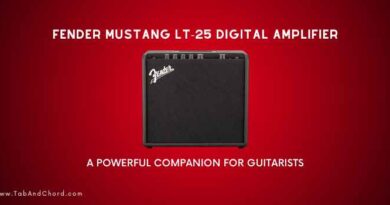Essential Symbol In Guitar Tab You Need To Know
Guitar tabs are a fantastic way to learn and play your favorite songs, especially for beginners. However, to get the most out of tabs, it’s essential to understand the various symbols that represent different playing techniques and nuances. Here’s a comprehensive guide to the symbols you’ll encounter in guitar tabs.
1. Hammer-On (h)
A hammer-on is when you pick a note and then press down on a higher fret on the same string without picking again. In tabs, it’s represented by the letter “h” between two notes, like this:
5h7This means you play the 5th fret, then “hammer-on” to the 7th fret.
2. Pull-Off (p)
The opposite of a hammer-on, a pull-off is when you play a note and then pull your finger off the fretboard to a lower fret on the same string. It’s indicated by the letter “p”:
7p5Play the 7th fret, then pull off to the 5th fret.
3. Slide (/) and ()
Sliding involves playing a note and sliding your finger up or down the fretboard to another note without lifting your finger. Slides are denoted by a forward slash (/) for sliding up and a backslash () for sliding down:
5/7 or 7\5This means you slide from the 5th fret to the 7th fret or from the 7th fret down to the 5th fret.
4. Bend (b)
Bending is when you push or pull a string sideways to raise the pitch. In tabs, bends are shown with a “b,” often with the target note in parentheses:
7b9This means you bend the 7th fret note up to the pitch of the 9th fret.
5. Release Bend (r)
After bending a note, you can release it back to the original pitch. This is indicated by an “r”:
9r7This means you release the bend from the pitch of the 9th fret back to the 7th fret.
6. Vibrato (~)
Vibrato adds a slight, rapid variation in pitch to a note, giving it a “wavy” sound. It’s shown in tabs with a tilde (~) symbol:
7~Apply vibrato to the note on the 7th fret.
7. Palm Mute (PM)
Palm muting involves resting the side of your picking hand lightly on the strings near the bridge while you play. This technique produces a muted, percussive sound. In tabs, it’s often abbreviated as “PM” with dashed lines to show how long the muting should last:
PM----|
7 7 7 78. Harmonics (< > or [ ])
Harmonics are produced by lightly touching a string at certain points on the fretboard and then plucking the string. They are often indicated in tabs by diamond-shaped brackets or just plain brackets:
<7> or [12]This tells you to play a harmonic at the 7th or 12th fret.
9. Dead Note (x)
A dead note is a percussive sound made by muting the string with your fretting hand while picking. It’s shown with an “x” in tabs:
x x x xThis indicates to play four dead notes.
10. Tapping (t)
Tapping involves using a finger on your picking hand to tap the fretboard, usually at high speed. It’s represented by a “t” in tabs:
t12p7h9This means you tap the 12th fret, pull off to the 7th, and then hammer on the 9th fret.
11. Tremolo Picking (///)
Tremolo picking involves rapidly picking a single note repeatedly. This is often indicated by three slashes (///) through the stem of a note or above the note in the tab:
7///This means to play the note on the 7th fret with rapid, repeated picking.
12. Trill (tr)
A trill is a rapid alternation between two adjacent notes. It’s usually represented by the abbreviation “tr”:
tr5h7p5This means to quickly alternate between the 5th and 7th frets.
13. Grace Note (small note)
A grace note is a quick, ornamental note played just before the main note. In tabs, it’s usually written as a smaller note:
(5)7This means you play the 5th fret very quickly before moving to the 7th fret.
14. Arpeggio (~~~)
An arpeggio is when the notes of a chord are played one after the other instead of all at once. In tabs, arpeggios are sometimes indicated with a wavy line (~~~) running vertically along the notes:
e|--0~~~~--|
B|--1~~~~--|
G|--2~~~~--|This means to play the notes in sequence smoothly.
15. Muted Strum (X)
A muted strum is when you strum the strings while muting them with your fretting hand to create a percussive sound. This is indicated by an “X” across the strings:
X-X-X-XThis shows that you should strum all strings while muting them.
16. Let Ring ( )
Sometimes you’ll see “let ring” written above a note or group of notes. This indicates that you should allow the notes to ring out and sustain rather than stopping them:
7--(let ring)Let the note on the 7th fret sustain.
17. Ghost Note (())
A ghost note is a note that’s played very softly, almost inaudibly. It’s usually written in parentheses:
(7)This means you play the note on the 7th fret very lightly.
18. Natural Harmonics (N.H.)
Natural harmonics are played by lightly touching the string at specific fret positions and picking the note. Tabs often mark these with “N.H.” along with the fret number:
N.H. 12This means to play a natural harmonic at the 12th fret.
19. Artificial Harmonics (A.H.)
Artificial harmonics are created by using a technique that involves lightly touching the string with the picking hand while plucking it. These are often indicated by “A.H.” in the tab:
A.H.This shows that the note should be played as an artificial harmonic.
20. Staccato (.)
Staccato is a playing technique where the notes are played very short and detached. In tabs, it’s indicated by a dot above or below the note:
7.This means to play the note on the 7th fret with a short, detached sound.
Conclusion
Familiarizing yourself with these symbols will significantly enhance your ability to read and interpret guitar tabs accurately. As you practice, these symbols will become second nature, allowing you to play with greater expression and technical skill. Keep this guide handy, and happy playing!
This expanded guide covers a broader range of guitar tab symbols, making it a valuable resource for beginners and more advanced players alike. If you have any other questions or need further clarification, feel free to ask!


